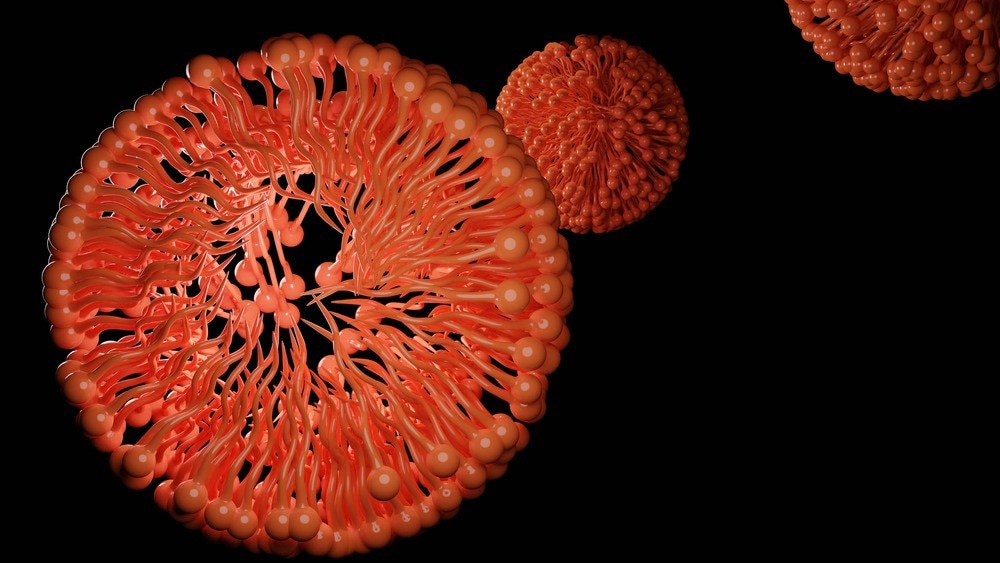In a recent review published in Pharmaceuticals, researchers documented the various polymeric materials that can be used to synthesize micelles, which can then be used for targeted cancer therapy by tailoring the micelles to respond to stimuli.
 Study: Exploring the Application of Micellar Drug Delivery Systems in Cancer Nanomedicine. Image Credit: sanjaya viraj bandara/Shutterstock
Study: Exploring the Application of Micellar Drug Delivery Systems in Cancer Nanomedicine. Image Credit: sanjaya viraj bandara/Shutterstock
Background
Targeted cancer therapy is an area that has received considerable attention over the past year, with nanotechnology now being used to deliver chemotherapy drugs directly to the tumor or cancer cells. Alongside targeted drug delivery, other areas of health and medicine, such as immune system development, imaging, and diagnostics, have also evolved with the advent of nanotechnology. Medical regulatory authorities in the United States and various European countries have approved the use of polymeric micelles and liposomes for chemotherapy.
Polymeric micelles can be tailored to release the drugs only in response to a specific stimulus. Tumor microenvironments differ from that of healthy tissue. Microenvironmental differences include pH, the concentration of reactive oxidative species, hypoxia, the concentration of glutathione, and overexpressed enzymes such as hyaluronidase and metalloproteinase. These differences in the microenvironment can be used to ensure that the drug is released selectively, reducing systemic exposure to chemotherapy drugs.
Polymeric micelles have a hydrophilic polymeric outer layer that reduces non-specific absorption and increases the circulation time in the body. The nano size of the polymeric micelles also makes it easier for these nanoparticles to extravasate to the tumor site in response to the specific stimulus.
However, while there has been extensive research on the stimulus-response of polymeric micelles in cancer therapy, the polymeric materials that are available to synthesize such tailored micelles have not been documented in detail.
Polymeric micelles
The critical micelle concentration (CMC) is the concentration at which amphiphilic polymers form ordered micellar structures in an aqueous environment. Various methods based on surface tension, fluorometry, light scattering, osmotic pressure, electrical conductivity, and surface plasmon resonance are used to determine the CMCs of various polymers.
Furthermore, different types of microscopies, paramagnetic resonance spectroscopy, and neutron, X-ray, and light scattering methods can be used to characterize the micellar structures formed by various polymers.
Various hydrophilic and hydrophobic polymers have been investigated for synthesizing polymeric micelles. Hydrophilic polymers such as polyethylene glycol, polysaccharides, and poly[N-(2-hydroxypropyl) methacrylamide](pHPMA) have the advantage of being non-toxic and biocompatible. This, therefore, allows them to circulate in the blood, target specific tissues, and reduce inflammatory responses. However, polyethylene glycol is not biodegradable, while polysaccharides degrade at higher temperatures, and pHPMA has a complicated process for synthesis.
Polyacrylic acid and polyglutamic acids are sensitive to pH, as well as biodegradable and biocompatible, but also have disadvantages such as poor mechanical stability and high production costs, respectively. The review discusses the advantages and disadvantages of various other hydrophilic polymers and hydrophobic polymers such as polyhistidine, polyethers, and polyesters.
Targeted drug delivery micelles
The review presented a detailed documentation of the various types of micelles used for targeted drug delivery based on the type of stimulus. These stimuli could either be present in the tumor microenvironment, such as hypoxic conditions, low pH, or overexpressed enzymes, or be external such as temperature, light, or localized magnetic fields.
Micelles synthesized using D-α-tocopherol acid polyethylene glycolsuccinate, curcumin-hyaluronic acid conjugate (HC), polyethylene glycol, and poly(ε-caprolactone) have been used to design pH-sensitive micelles for targeted chemotherapy. Furthermore, conjugates of polyethylene glycol and β-cyclodextrin have been used to design polymeric micelles that target tissues with a high concentration of reactive oxidative species.
The other types of micelles discussed in the review included hypoxia-sensitive micelles synthesized from various polymers, such as hydrophilic angelica polysaccharide incorporated with curcumin and methoxyl poly (ethylene glycol)-co-poly(aspartate-nitroimidazole). Another example includes enzyme-sensitive micelles composed of polyethylene glycol and glucose conjugates and polyamidoamine dendrimers that respond to overexpression of metalloproteinases.
Thermosensitive micelles synthesized from various polymers, including poly(N-isopropyl acrylamide), that release the drugs at the tumor site based on temperature changes in the tumor environment are included in the review. In addition to this, the use of magnetite, magnesium oxide, and maghemite to create micelles sensitive to magnetic forces was also included.
Additionally, the authors discussed several clinical trials that have evaluated the use of polymeric micelles sensitive to different stimuli in cancer therapy. Consequently, the researchers presented a detailed explanation of the regulatory processes that examine the efficacy and safety of drug delivery systems based on micellar nanoparticles.
Conclusions
Overall, this comprehensive review discussed the various types of polymeric materials available for the synthesis of stimulus-sensitive micelles for targeted drug delivery and the advantageous and disadvantageous properties of these materials.
Furthermore, various clinical trials that have studied the efficacy of micelle-based drug delivery systems and the regulatory considerations for testing the safety and efficacy of these polymeric micellar drug delivery methods were also covered in the review.